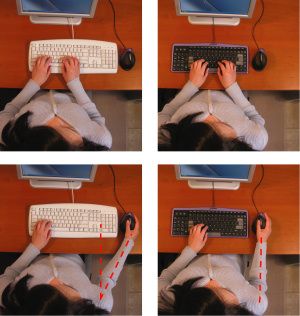How to do work from home without damaging your back
Owing to the COVID-19 outbreak, a lot of people had to make an abrupt shift from the corporate setting to working from their bedrooms. While some are lucky enough to have an ergonomic work from home space, others try and make use of the less-than-ideal set up consisting of beds, coffee tables, couches and dining tables. If you do this for only short periods of time, you might not need to worry, but our weeks at home are turning into months and years. If you’re one of these people, you may be noticing new aches and pains that you did not experience at the office. Working longer hours, not having a supportive chair and poor posture can all lead to back pain.
Back pain is caused by work-related stress as well as work-related physical factors. Prolonged sitting forces your spine’s natural “S” curve into a “C” curve, which puts more stress on your muscles, ligaments, discs and tissue
It’s important that the chair facilitates good posture – many chairs that aren’t ergonomically designed go out at too far an angle. Dr Bhatia recommends asking someone in the house to take a photo of you sitting, so that you can check whether your torso and head are in a straight line.
The chair should support your lower back, so the spine is in its natural S-shape. If not, he recommends adding a cushion or rolled-up towel. The chair should also allow the knees and elbows to be at right angles, to minimize unnecessary muscle strain.
If the chair is too high and your feet aren’t supported, he recommends using a stable surface to prop them up. The desk should support the elbows – if that’s too high and you can’t lift the chair, try sitting on a pillow or a cushion.
Your keyboard and mouse should be about 8cm to 10cm from the edge of your desk, and the top of the monitor should be about one arm’s length away, at eye level to avoid leaning forward or back.
Regular rest breaks are critical, making sure to get out of the chair every 30 to 45 minutes – if only briefly, to move around, stretch and change position. This will shift the strain between intervertebral discs, the spine’s shock absorbers.
Standup desks are great, he says, mostly for facilitating frequent postural change without having to move away from the desk. you could use it to work standing up for 15 or 20 minutes every hour or two – the maximum he recommends standing is for 20% to 30% of the working day. Standing for extended periods of time also increases the risks of varicose veins.
Exercise has numerous physical health benefits, he says, and is also a brilliant way to strengthen muscles and protect your back, especially through a strong core workout and body weight exercises. Bridges, clamshells and bird dogs are some of the exercises that one should do.
Obesity is also one of the leading cause of back pain . Keeping weight in check minimizes added pressure placed on the spine and supporting joints, muscles, and tendons. Excess weight can also shift your body’s natural center of gravity and place extra weight on the spine. Ideally, staying within 10 pounds of your normal weight is good for your back.
Keep your body weight under check and avoid smoking.
Overall , Correct posture, according to Dr Bhatia is the simplest way to prevent back pain. Exercise also helps but turning your back on it can lead to serious health complications.




